Welcome to On Verticality. This blog explores the innate human need to escape the surface of the earth, and our struggles to do so throughout history. If you’re new here, a good place to start is the Theory of Verticality section or the Introduction to Verticality. If you want to receive updates on what’s new with the blog, you can use the Subscribe page to sign up. Thanks for visiting!
Click to filter posts by the three main subjects for the blog : Architecture, Flight and Mountains.
"The human bird shall take his first flight, filling the world with amazement, all writings with his fame, and bringing eternal glory to the nest whence he sprang."
-Leonardo da Vinci, Italian painter and inventor, 1452-1519
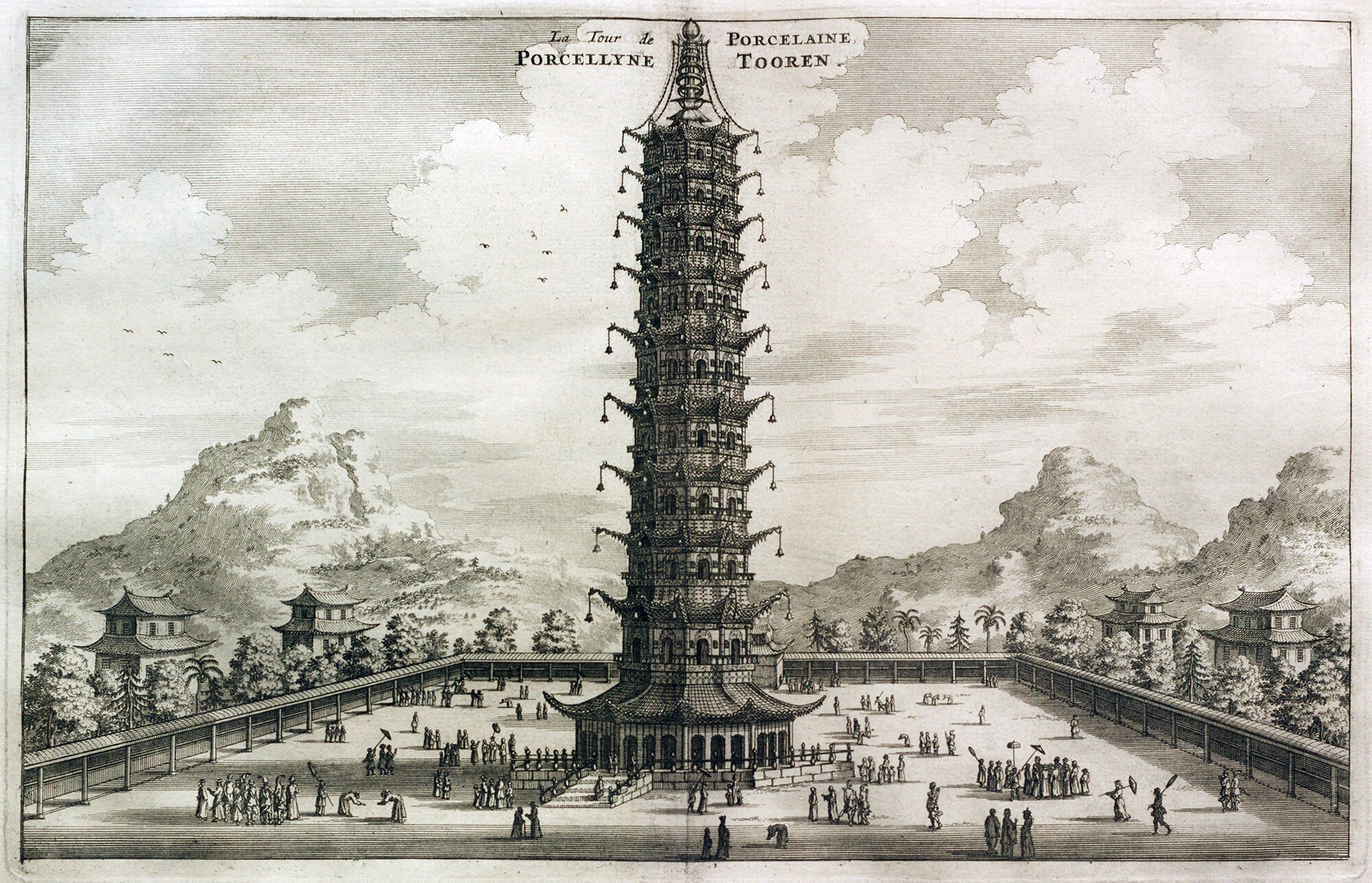
The Porcelain Tower of Nankin
This is the Porcelain Tower of Nankin. It stood at a height of roughly 79 m (260 ft), and is one of the tallest pagodas that we have records of. It was built as part of the Great Bao'en Temple in present-day Nanjing, China. Pagodas are usually associated with a temple, which suggests that they function much like a bell tower or steeple, using Verticality to announce the importance of a place.
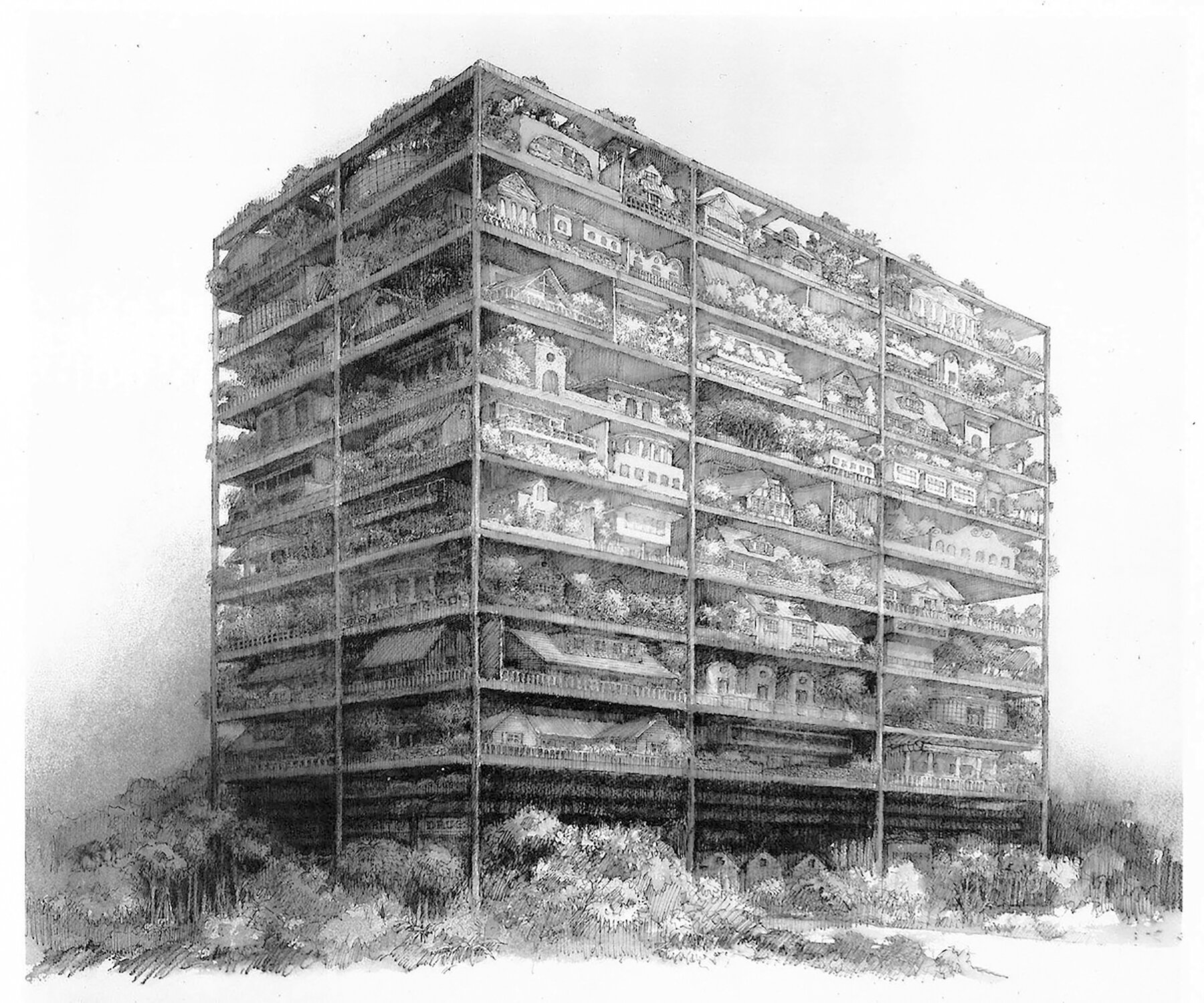
James Wines and the Highrise of Homes
This is the Highrise of Homes, designed in 1981 by James Wines and his firm SITE. The project consists of a series of stacked levels with individual homes built throughout each level. These homes appear much like the single-family detached homes of suburbia, which is a curious mashup of typologies. Wines is using Verticality to re-arrange a typical suburb into a vertical tower, complete with sidewalks, front and back yards, and pitched roofs. This rearrangement creates some curious scenarios and experiences which are worth pondering.
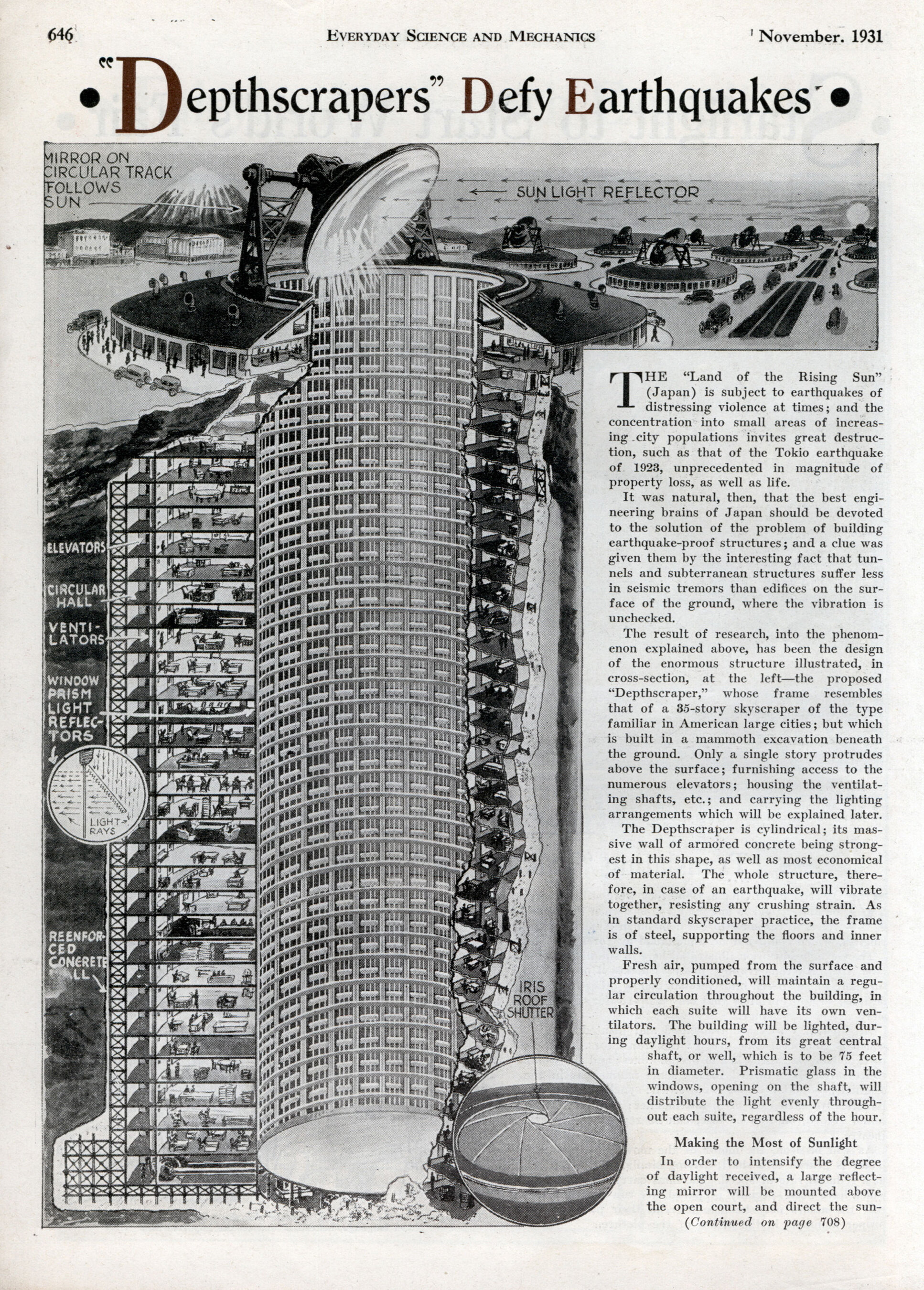
The Earthquake-proof Depthscraper
Take a look at this design for a subterranean tower from Everyday Science and Mechanics in 1931. The structure was designed by Japanese engineers in response to earthquake concerns, so the building claims to be ‘earthquake-proof’. Technical aspects aside, questions abound regarding the experience of living or working in such a structure.
"Man must rise above the Earth, to the top of the atmosphere and beyond, for only thus will he fully understand the world in which he lives."
-Attributed to Socrates, classical Greek philosopher, circa 470-399 BC
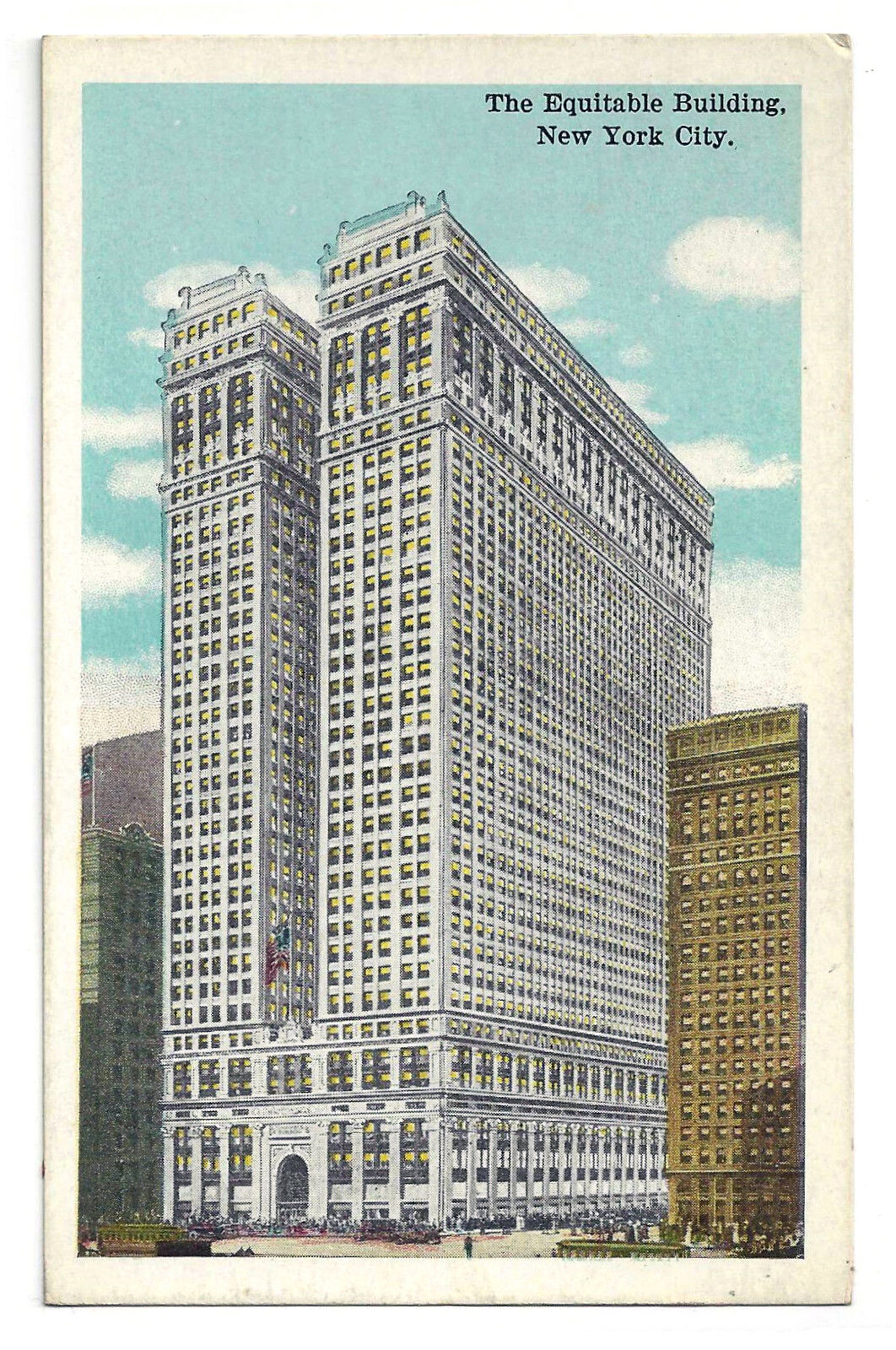
Verticality, Part IX: Man Upends God
The needs of man become more important than the needs of God
After the Renaissance, humanity would largely abandon our ambitions to recreate heaven on earth, and our focus would shift to raising up our bodies as far from the surface as possible. Rather than singular, largely empty spaces, our tallest and most ambitious constructions would become containers of stacked spaces, still with Verticality as the ultimate goal. We were beginning to escape the surface.
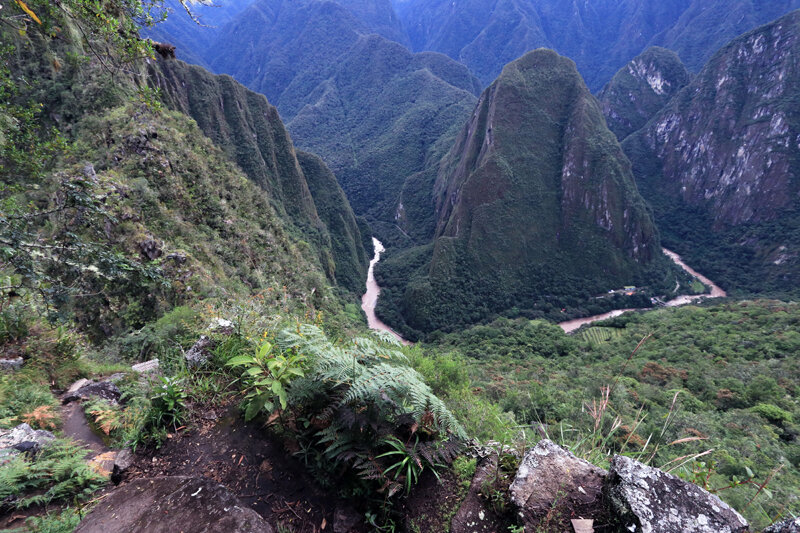
Anecdotes : Machu Picchu and A Fear of Heights
I recently took a trip to Machu Picchu in Peru, and spent four days hiking the Inca Trail through the Andes Mountains. The hike included exposed, narrow trails up steep mountain sides and cliffs, and the experience put me face-to-face with a long standing but waning fear of heights. It got me thinking about my personal history with this phobia, and how far I’ve come through exposure therapy.
"Once you have tasted flight, you will forever walk the earth with your eyes turned skyward, for there you have been, and there you will always long to return."
-Attributed to Leonardo da Vinci, Italian painter and inventor, 1452-1519
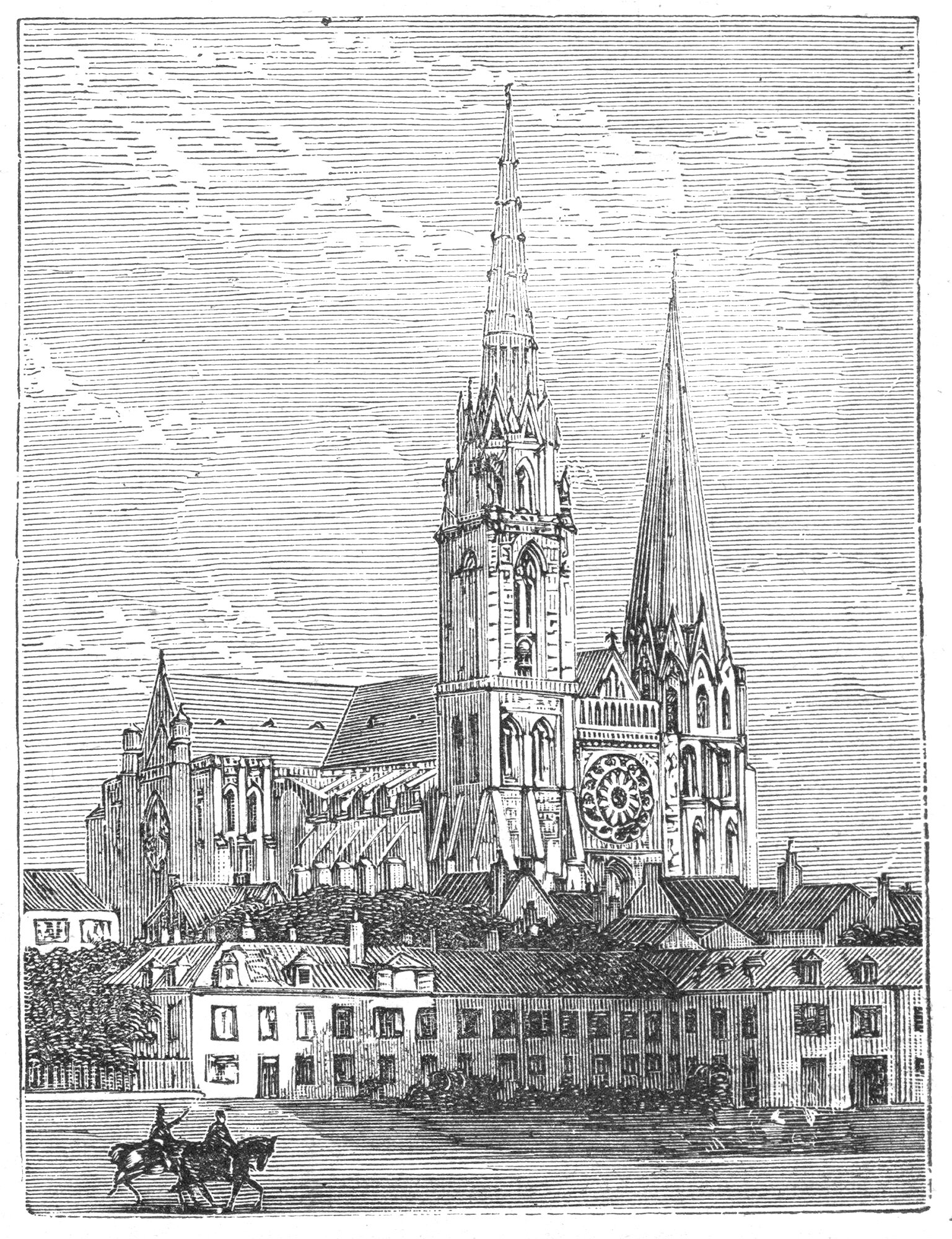
Verticality, Part VIII: God versus Ego
The human world becomes as important as the world of God
The rise of Christianity in the Western world would have profound effects on the built environment and human culture. Two major threads would combine to influence Early Christian architecture and culture. The first is the architecture of the Ancient Romans, who were already wrestling with Verticality. The second is the Book of Genesis and its central theme of Heaven (the above) and Hell (the below). Combine these two, and you get an ongoing battle between God and Ego that would see some of the most impressive structures of all time get built.
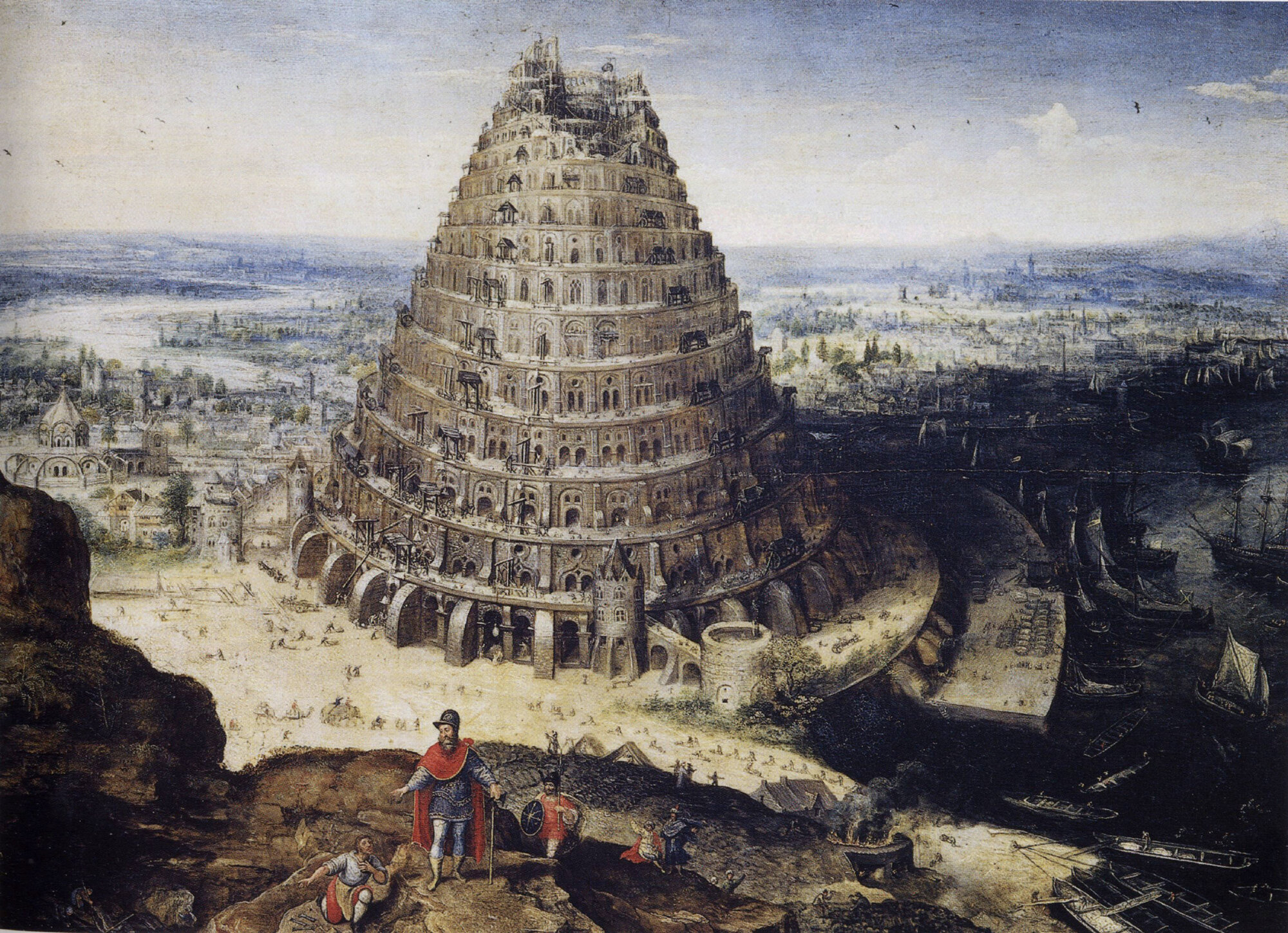
Verticality, Part VII: Heavens on Earth
Humanity’s first major attempts to recreate heaven on earth
In the previous section, we explored ancient civilizations and how they utilized Verticality in their architecture. In each of these civilizations, building a structure that connected the surface to the sky was seen as the pinnacle of human achievement. This was done to appease or satisfy some type of god or gods, and untold amounts of time and effort were spent on the road to achieving it. Throughout time, however, the needs of our gods would begin to see competition from the needs of humanity, or our own Ego.

Forests and Verticality
The progression of forest growth over time is based on access to and competition for sunlight. This process is based on Verticality. As a plant grows taller, it casts a shadow on everything below its foliage, hindering the growth of smaller plants below. This process can be found throughout the natural world, and it follows a pattern of regrowth called plant succession.
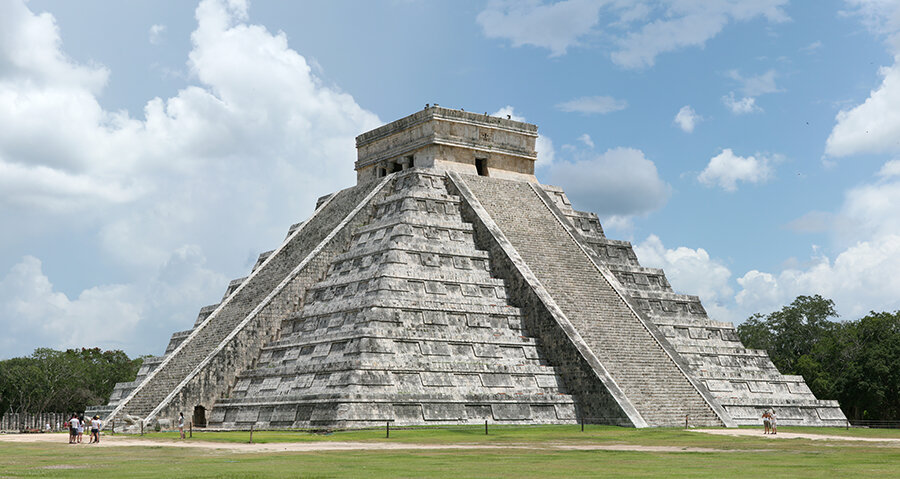
Verticality, Part VI: Archetypes
Man’s initial attempts to get closer to the sky in each of the five cradles of civilization
How does one achieve physical Verticality? At the most basic level, we can get closer to the sky in two ways. First, we can recreate the human body with singular elements that express height on their own. These objects can be seen as proxies for our own bipedal bodies. Second, we can physically raise the surface under our feet in order to raise our bodies up closer to the sky. These constructions can be seen as recreations of mountains, which are the highest places we can reach in the natural landscape. As our ancestors set out to externalize their need for Verticality, they experimented with both of these methods.
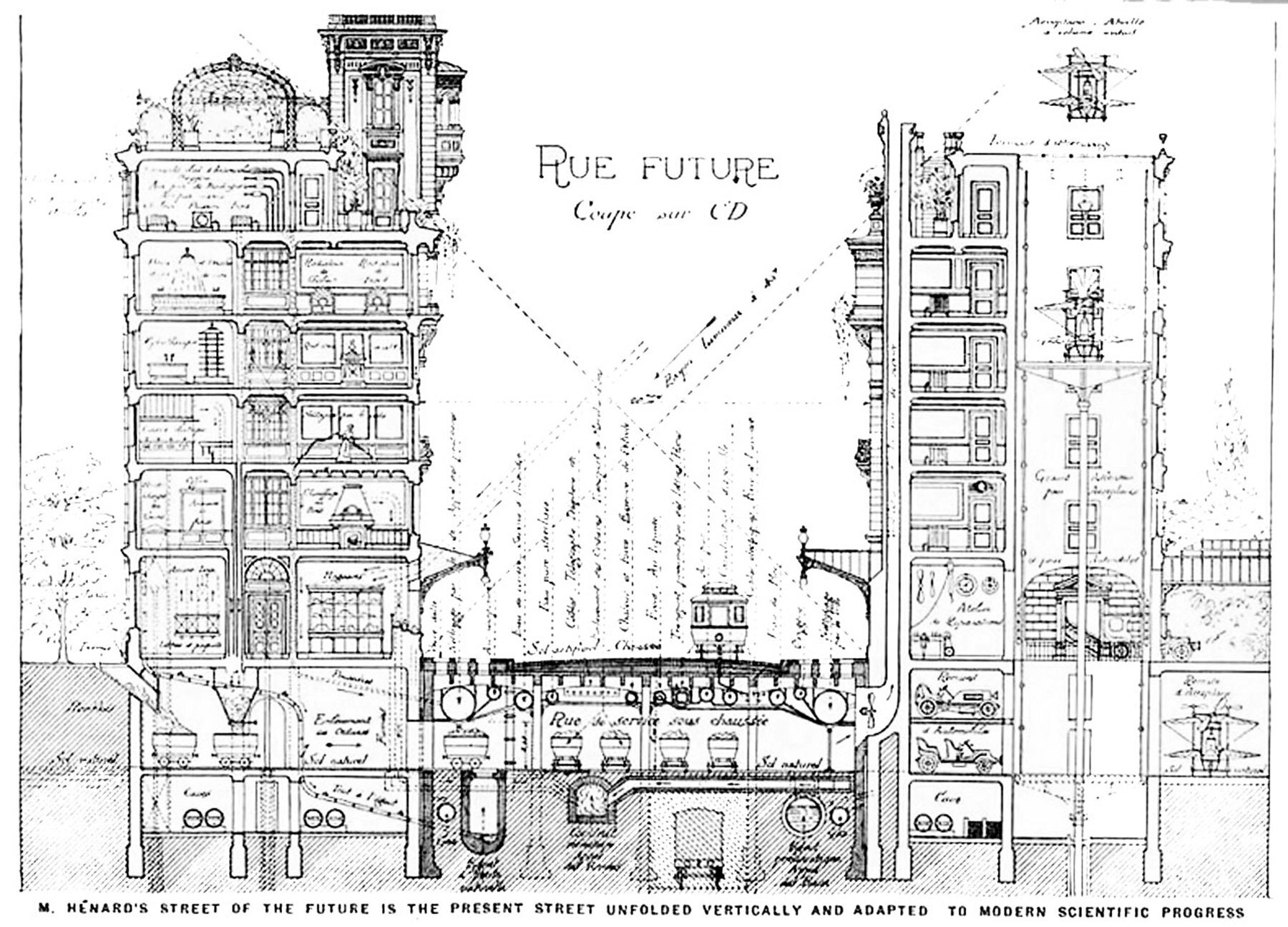
Cities of the Future from the Past
It's always interesting to see how previous generations viewed the future of their cities. In particular, the early 20th century was a hotbed for this type of thinking due to the emergence of the skyscraper as a building type.

Superheroes and Skyscrapers
It’s a common shot in superhero movies for the titular character to be shown on top of a building, looking out over the landscape and the city below. I first took notice of this trope on a recent flight while watching Venom (2018), and I began pondering just how common this shot is.
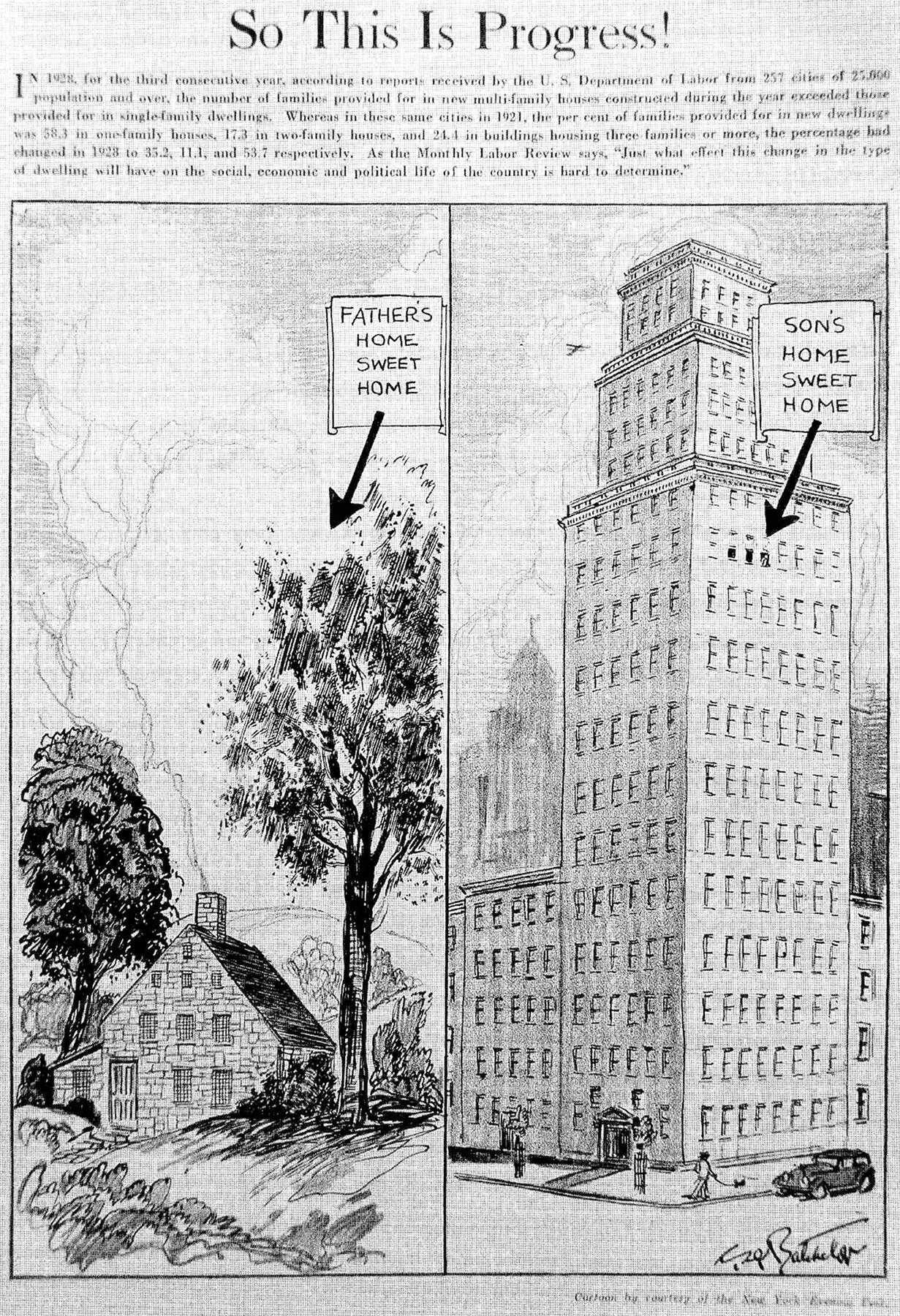
Anecdotes : A Tale of Two Apartments
Over the past few years, I've had two very different living experiences. The first, a 48th floor apartment in the Financial District of New York City. The second, a first floor flat in Park Slope, Brooklyn. I loved living in each of these apartments immensely, but the differences between the two have taught me a great deal about Verticality and its effects on our lives.
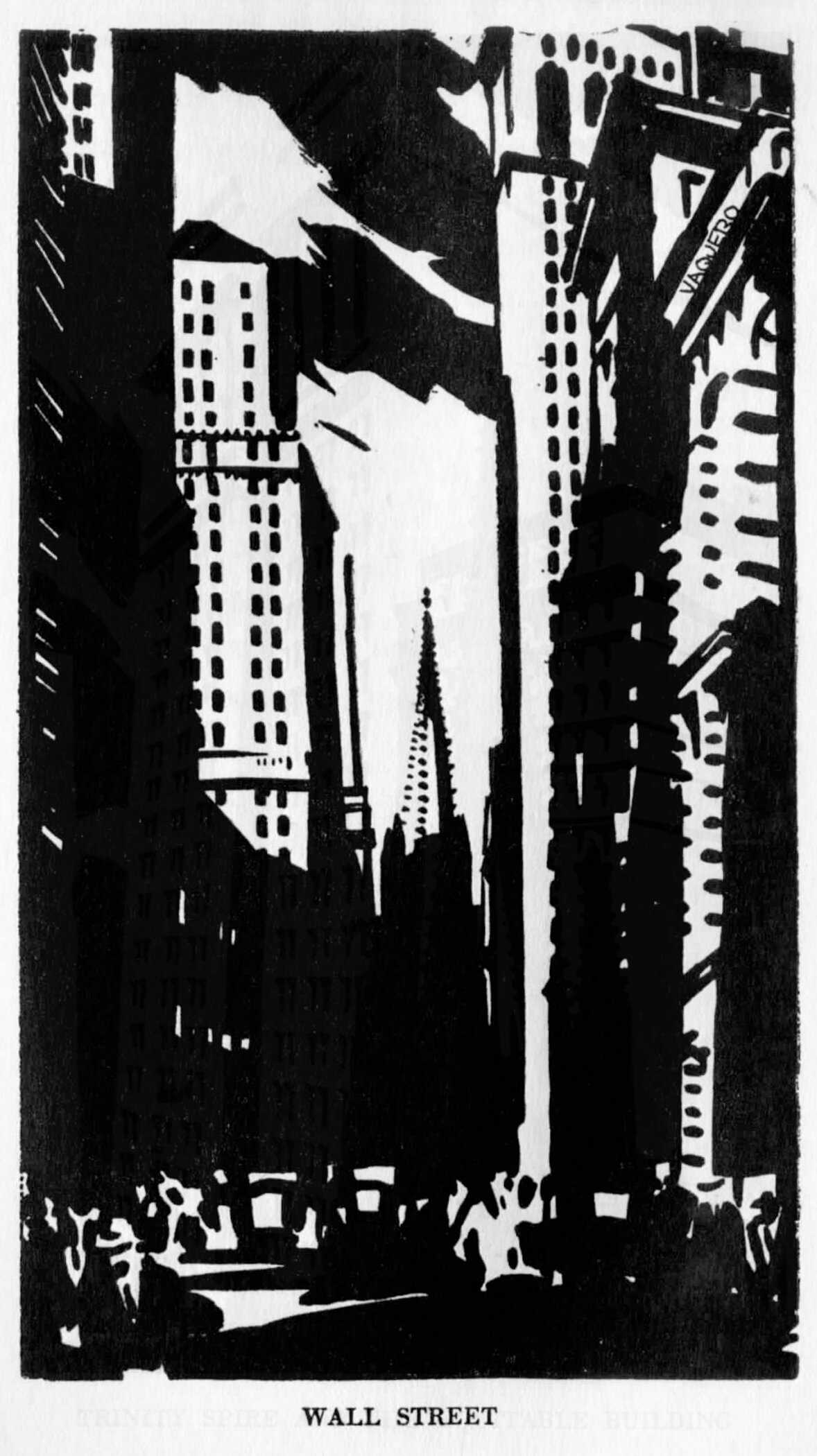
Trinity Church and The Contemporary Dwarfing of Historic Structures
Height in the built environment is relative. A tall building at the center of a major city today is quite a different idea than a tall building was a hundred years ago. As a city grows, taller buildings will get built throughout time, and the meaning of tall gets taller with them. Buildings once considered tall get overshadowed by more contemporary structures.
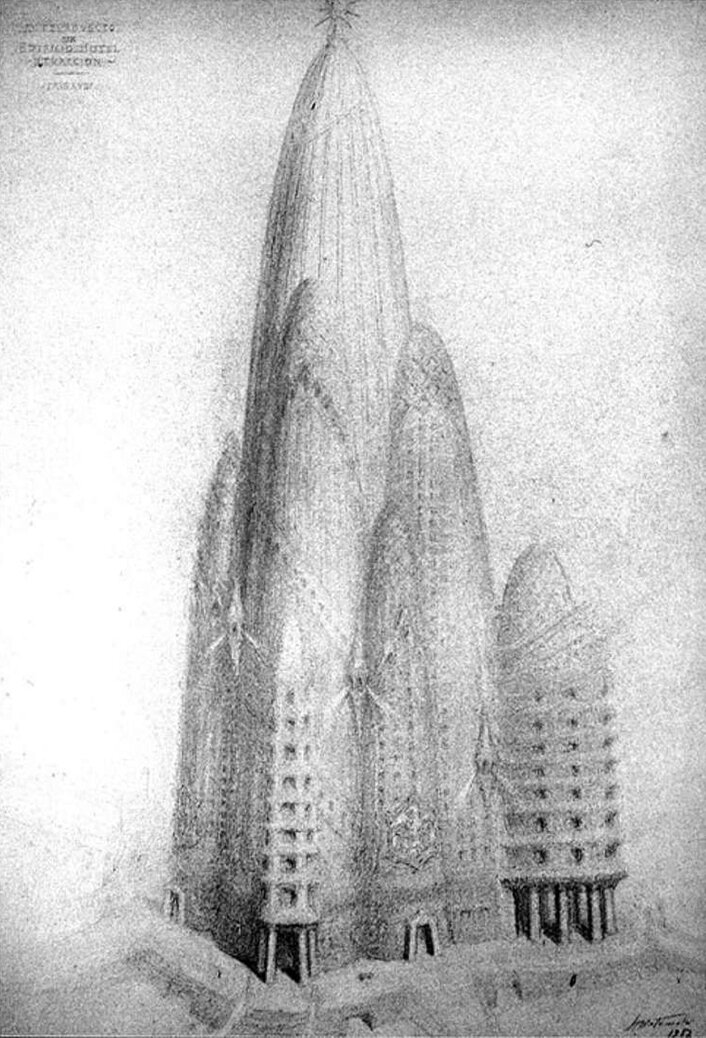
Antoni Gaudí's New York Skyscraper
The Spanish architect Antoni Gaudí is known the world over for his iconic architecture, rich in organic, curvilinear forms. One lesser-known project of his is the Hotel Attraction. It was designed in 1908 for an unspecified site in Lower Manhattan, New York City. The project would have housed a hotel, restaurants, theatre hall, exhibition hall, galleries, and a panoramic lookout at the top, called the 'Space Tower'. If built, it would have been 360 meters, or 1,181 feet tall.

Verticality, Part V: Global Threads
How Defense and God provided the initial thrust for the Verticality narrative
Once our ancestors ceased to be nomadic and began establishing permanent settlements, two major threads of our development emerged. The first was the need to defend our territories against others; once we’d accomplished this, our attention shifted to our relationship with the unknown, or God. Each of these threads would evolve over time, and each was approached through the lens of Verticality.
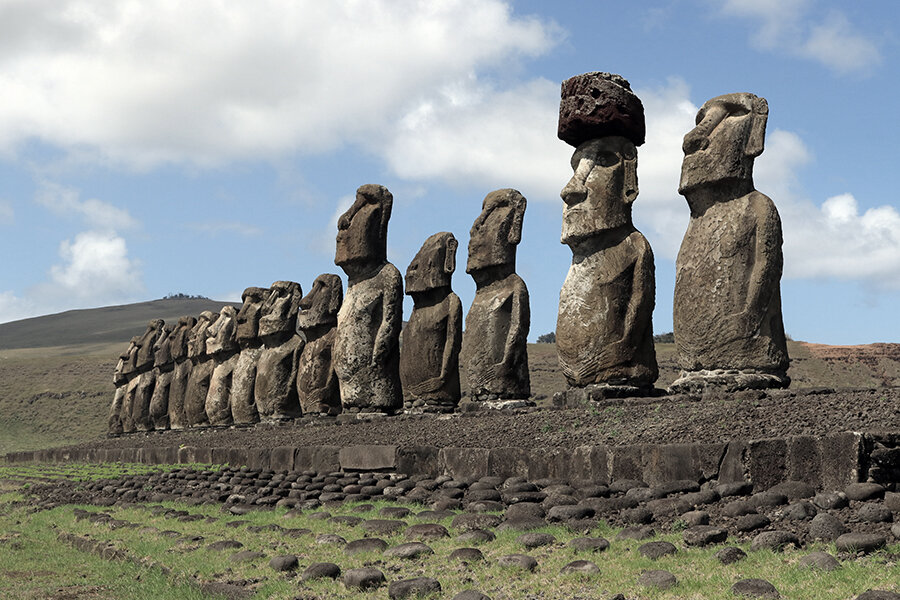
The Moai of Easter Island
Easter Island is known the world over for its famous Moai statues, carved by the indigenous Rapa Nui people between 1250 and 1500. These statues have become iconic over the years, and most everyone has seen photos of them. A closer look at their design progression over time reveals a fascinating story, however. The Moai have a mysterious quality to them, partly because their story is one we don't have all the answers to.
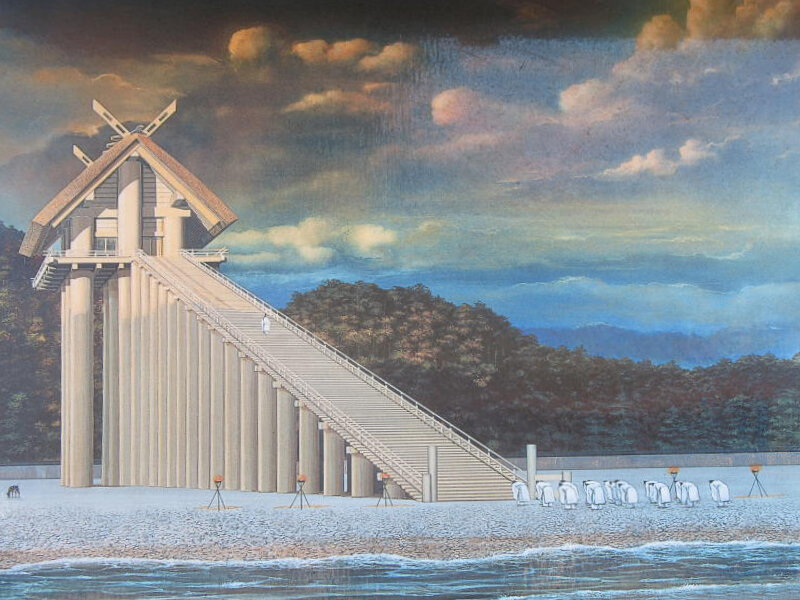
The Izumo-taisha Shrine
The ancient Izumo-taisha Shrine in southern Japan, built sometime around the 10th century AD, has all the ingredients of Verticality in its built form. The structure pictured above no longer exists, and we don't know exactly how it looked, but some records claim that the ancient temple was raised as high as 48 meters above the ground.
